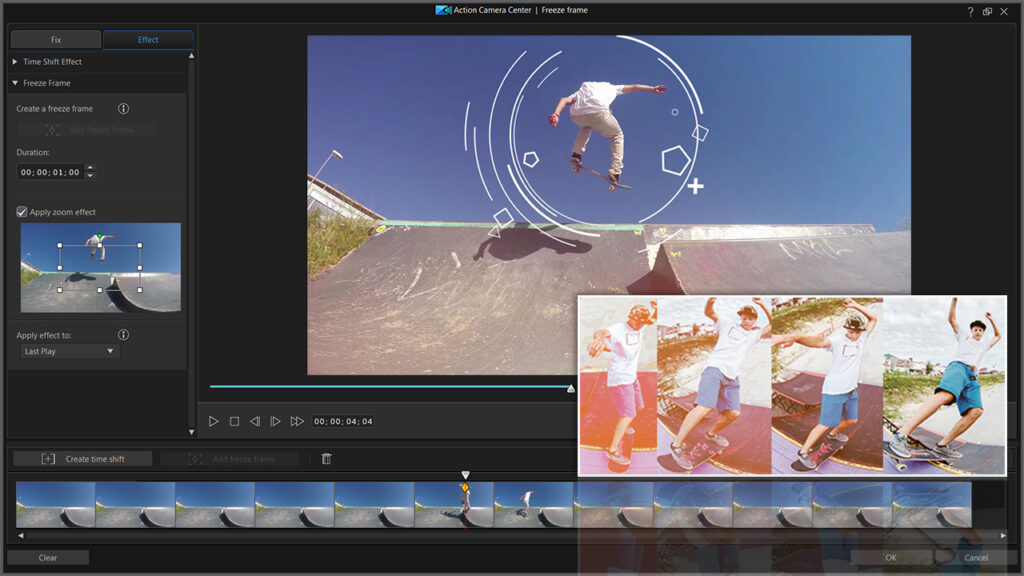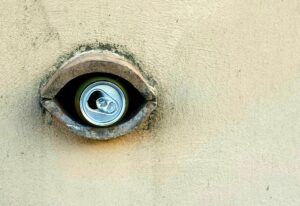How to Create a Freeze Frame Effect in PowerDirector

Creating a freeze frame effect in CyberLink PowerDirector can add a dramatic touch to your videos, highlight important moments, or create a comedic impact. This effect is widely used in various types of video productions, including movies, commercials, and home videos. In this comprehensive guide, we will walk you through the steps to create a freeze frame effect in PowerDirector, from the basics to advanced techniques.
1. Introduction to Freeze Frame Effect
The freeze frame effect is a technique where a single frame of the video is held still, creating the illusion that time has stopped. This effect can be used for:
- Emphasizing a particular moment or action.
- Creating dramatic pauses.
- Adding a humorous or stylistic element to the video.
2. Preparing Your Project
Before you start creating a freeze frame effect, you need to prepare your project in PowerDirector.
a. Importing Media
- Open PowerDirector: Launch PowerDirector on your computer.
- Import Media: Click on the “Import Media” button in the Media Library to add your video clips.
- Add to Timeline: Drag your video clip from the Media Library to the timeline.
b. Setting Up Your Timeline
- Timeline View: Ensure you are in the timeline view for precise editing.
- Playhead Position: Move the playhead to the exact frame where you want to create the freeze frame effect.
3. Creating a Basic Freeze Frame
The basic freeze frame effect involves capturing a single frame from your video and extending its duration.
a. Capturing the Frame
- Move Playhead: Position the playhead on the frame you want to freeze.
- Capture Frame: Right-click on the video clip in the timeline and select “Edit Video/Image” > “Freeze Frame.”
b. Inserting the Freeze Frame
- Insert Duration: Choose the duration for which you want the frame to be frozen. Common durations are between 2-5 seconds.
- Confirm: Click “OK” to insert the freeze frame into the timeline.
4. Enhancing the Freeze Frame Effect
To make your freeze frame effect more dynamic and engaging, consider adding enhancements such as transitions, text, and additional effects.
a. Adding Transitions
- Transition Room: Click on the “Transition Room” icon on the left panel.
- Select Transition: Choose a transition effect that complements your freeze frame (e.g., fade, flash).
- Apply Transition: Drag the selected transition to the beginning or end of the freeze frame clip in the timeline.
b. Adding Text
- Title Room: Click on the “Title Room” icon on the left panel.
- Select Title Template: Choose a text template and drag it to the timeline, placing it above the freeze frame clip.
- Customize Text: Double-click the text layer to open the Title Designer and customize the text.
c. Adding Effects
- Effect Room: Click on the “Effect Room” icon on the left panel.
- Select Effect: Choose an effect that enhances the freeze frame, such as a color filter or motion effect.
- Apply Effect: Drag the effect to the freeze frame clip in the timeline and adjust the settings as needed.
5. Advanced Freeze Frame Techniques
For more advanced users, there are several techniques to create complex and visually striking freeze frame effects.
a. Using Keyframes for Animation
Keyframes allow you to animate properties of the freeze frame, such as position, scale, and opacity.
- Select Freeze Frame: Click on the freeze frame clip in the timeline to select it.
- Open Keyframe Settings: Click the “Keyframe” button above the timeline to open the Keyframe Settings panel.
- Add Keyframes: Add keyframes at different points in the timeline to animate properties such as position, scale, and opacity.
- Adjust Values: Adjust the values at each keyframe to create dynamic animations.
b. Combining Freeze Frames with Motion Graphics
Combining freeze frames with motion graphics can create a dynamic and engaging effect.
- Import Motion Graphics: Import motion graphics elements into the Media Library.
- Add to Timeline: Drag the motion graphics to the timeline, placing them above the freeze frame clip.
- Customize Animation: Use keyframes to animate the motion graphics elements in sync with the freeze frame.
c. Creating Multiple Freeze Frames
You can create multiple freeze frames in a single video to emphasize different moments.
- Identify Moments: Identify the key moments in your video where you want to create freeze frames.
- Capture Frames: Repeat the process of capturing frames and inserting freeze frames for each moment.
- Sequence Freeze Frames: Arrange the freeze frames in the timeline to create a sequence of still moments.
6. Practical Applications of Freeze Frame Effects
Freeze frame effects can be used in various types of video projects to enhance storytelling and visual appeal.
a. Action Videos
Highlight key actions in sports videos or action scenes.
- Capture Key Moments: Freeze frames can emphasize key moments in a fast-paced action sequence.
- Add Impact: Use effects like zoom or slow motion to add impact to the freeze frame.
b. Educational Videos
Pause the video to emphasize important information or details.
- Highlight Key Points: Use freeze frames to pause and highlight key points or information.
- Add Annotations: Add text or annotations to the freeze frame to provide additional context.
c. Comedy Videos
Create comedic timing by pausing on humorous moments.
- Pause for Effect: Use freeze frames to pause on funny expressions or actions to enhance comedic timing.
- Add Sound Effects: Complement the freeze frame with sound effects to enhance the humor.
7. Tips and Best Practices
To create professional and polished freeze frame effects, consider these tips and best practices:
a. Timing
- Duration: Choose an appropriate duration for the freeze frame to maintain the flow of the video.
- Placement: Position the freeze frame at key moments to maximize its impact.
b. Consistency
- Style: Maintain a consistent style for freeze frames throughout the video to ensure a cohesive look.
- Effects: Use similar effects and transitions for all freeze frames to maintain consistency.
c. Subtlety
- Avoid Overuse: Use freeze frames sparingly to avoid disrupting the flow of the video.
- Subtle Enhancements: Make subtle adjustments to the freeze frame to enhance its impact without overwhelming the viewer.
8. Troubleshooting Common Issues
When creating freeze frame effects, you might encounter some common issues. Here’s how to troubleshoot them:
a. Freeze Frame Not Holding
- Check Duration: Ensure the freeze frame duration is set correctly.
- Reapply Effect: If the freeze frame is not holding, try reapplying the effect.
b. Frame Quality Issues
- High-Resolution Footage: Use high-resolution footage for better quality freeze frames.
- Frame Selection: Choose a clear and sharp frame to freeze.
c. Sync Issues
- Align with Audio: Ensure the freeze frame is aligned with the audio or other elements in the timeline.
- Keyframe Adjustment: Adjust keyframes to ensure smooth transitions and synchronization.
9. Exporting Your Video
After creating and enhancing your freeze frame effects, it’s time to export your video.
a. Previewing
- Final Preview: Play back the entire project to ensure the freeze frame effects are smooth and correctly applied.
- Make Adjustments: Make any final adjustments to the effects, text, or transitions.
b. Exporting
- Produce: Click on the “Produce” button to open the export settings.
- Select Format: Choose the desired video format and quality settings.
- Export: Click “Start” to export the video with the applied freeze frame effects.
Conclusion
Creating a freeze frame effect in CyberLink PowerDirector is a powerful way to enhance your video projects, adding emphasis, drama, or humor. By following this comprehensive guide, you can capture, enhance, and customize freeze frame effects to achieve professional-quality results. Whether you are working on action videos, educational content, or comedy sketches, the freeze frame effect offers endless creative possibilities. Experiment with different techniques, combine effects, and use keyframes to unlock the full potential of this versatile editing tool. Happy editing!




